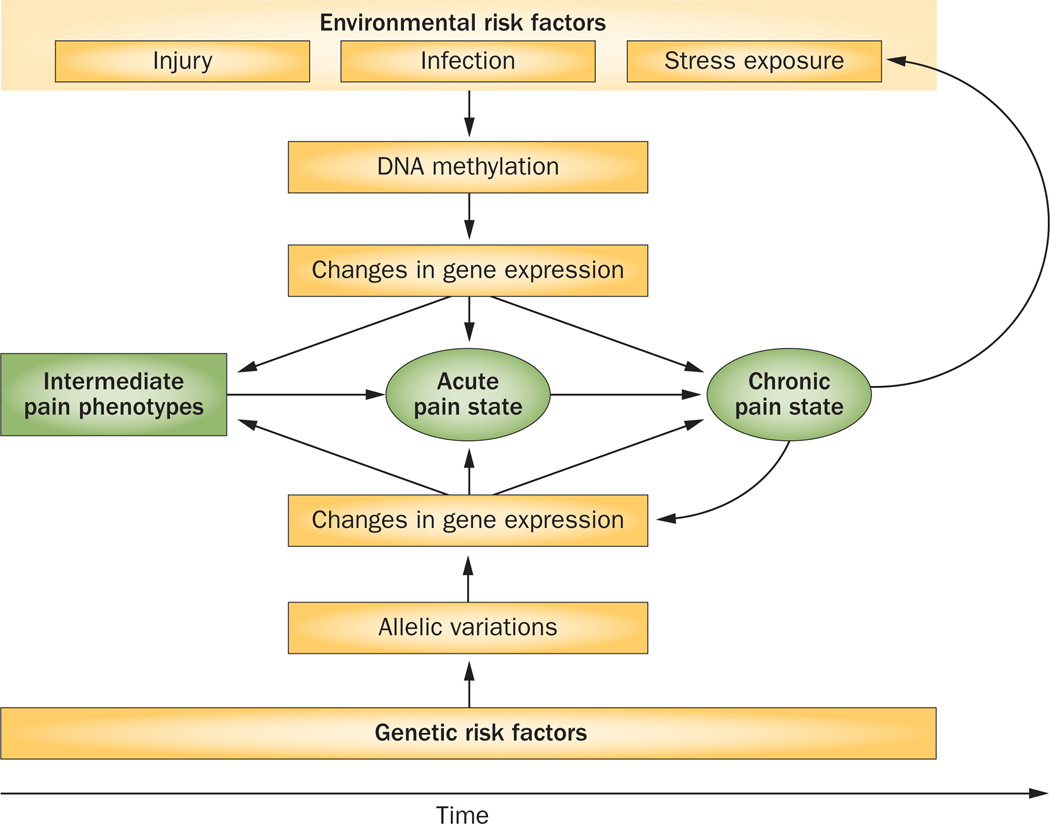Figure 2.
The pathological chronic pain circle. Genetic and environment interactions contribute to the development of pain conditions. Allelic variation underlies functional differences in expression or activity of pain-related gene products and activation of associated biological pathways, leading to manifestation of related pain endophenotypes. In addition, pain endophenotypes are shaped by exposure to environmental factors, which result in alteration of DNA methylation patterns that, in turn, change the expression of pain-related genes and the activity of associated biological pathways. With prolonged exposure to environmental stimuli that induce long-term methylation patterns—that is, long-lasting changes in DNA methylation—on a background of genetic susceptibility, altered gene expression profiles enable the transition of an acute pain state to a chronic pain state. The biological processes that lead to the chronic pain state further increase sensitivity to painful stimuli and perceived levels of stress, which further modifies pain-related gene expression, creating a pathological pain cycle.

